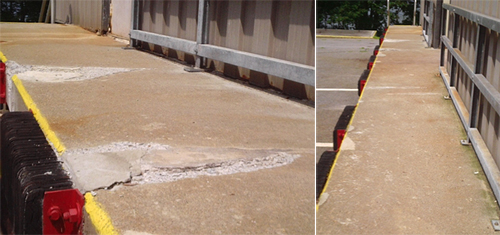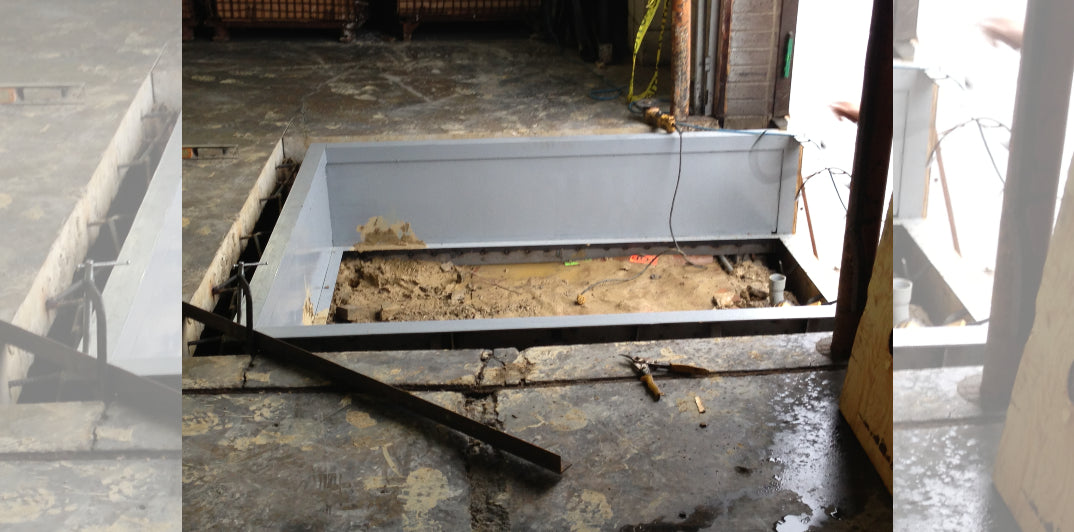How to Select the Right Solution for Your Dock Repairs
Effective Dock Repair Work Techniques: Ensuring Structural Stability
Ensuring the architectural stability of anchors through effective fixing strategies is extremely important for the durability and safety and security of aquatic centers. Ultimately, selecting the appropriate repair work materials, such as composite materials and corrosion-resistant alloys, is critical for longevity.
Evaluating Dock Damages
Assessing dock damage is a vital very first step in making certain the architectural integrity and safety and security of any type of docking center. This initial evaluation includes a comprehensive examination to recognize both hidden and noticeable problems. Secret aspects to analyze consist of the dock's foundation, pilings, decking, and equipment. Each element has to be looked at for signs of wear, rot, deterioration, or other kinds of destruction that might compromise the structural integrity.
Structural designers or certified examiners normally perform these evaluations utilizing specialized devices and techniques. Undersea examinations may utilize finder tools or remotely ran cars (ROVs) to detect immersed damage. Above water, visual assessments are enhanced by utilizing moisture meters and other analysis tools to discover underlying concerns not immediately visible to the naked eye.

Picking Repair Service Products
Picking the proper repair materials is an essential action in the dock repair procedure, one that straight affects the long life and efficiency of the repaired framework. Material selection should be driven by factors such as ecological conditions, load-bearing requirements, and compatibility with existing dock parts.
Along with timber, composite materials are increasingly prominent as a result of their resilience and reduced maintenance requirements. Composites, commonly made from a blend of plastic and timber fibers, use excellent resistance to rot, insects, and UV damage. For metal anchors, picking corrosion-resistant alloys such as galvanized steel or marine-grade aluminum is vital to avoid corrosion and ensure architectural honesty in saline water problems.
Epoxy materials and marine-grade sealers are essential for repairing fractures and securing joints, providing a waterproof barrier and improving the dock's general stamina. By carefully picking high-quality products, dock repair services can accomplish lasting outcomes, thus securing versus future deterioration and ensuring risk-free, reputable use.
Structural Reinforcement Methods
Efficient architectural reinforcement methods are essential in guaranteeing the security and durability of dock repairs. One fundamental approach includes making use of steel or composite support bars (rebar) within concrete frameworks. Rebar supplies added tensile stamina, stopping splits and dispersing lots a lot more equally. This approach is particularly effective for anchors subjected to heavy tons or harsh ecological problems.
One more essential strategy is the application of fiber-reinforced polymers (FRP) These materials use high strength-to-weight proportions and superb resistance to deterioration, making them suitable for strengthening concrete or wood anchors. FRP can be used in strips or sheets and adhered with epoxy resins to boost structural integrity.
Bracing and anchoring systems also play a critical duty in structural support. Cross-bracing, making use of metal or wood light beams, can counteract side pressures, decreasing swaying and activity. Securing systems, such as helical piers or driven heaps, give a steady foundation by moving tons to deeper, a lot more secure soil layers.
Finally, the assimilation of load-distribution plates can aid distribute weight more equally throughout the dock's surface, reducing localized anxiety points. These methods collectively guarantee that anchors continue to be secure and durable, qualified of enduring the rigors of their operational setting.
Advanced Repair Service Methods

An additional advanced technique includes undersea welding, which enables for repair services to be conducted without the need to dewater the location. This technique is particularly helpful for addressing structural concerns in immersed dock parts, making sure marginal disturbance to procedures. Enhanced welding techniques, coupled with robot systems, supply accuracy and integrity, therefore extending the life-span of the dock.
Furthermore, cathodic security systems are implemented to stop deterioration in metal dock frameworks. By utilizing sacrificial anodes or pleased present systems, these strategies properly reduce the electrochemical processes that bring about material wear and tear.
Lastly, progressed surveillance modern technologies, such as architectural health and wellness tracking (SHM) systems, offer real-time information on the condition of dock structures. These systems enable aggressive maintenance and prompt interventions, ultimately making certain the lasting architectural stability of the dock.
Maintenance and Avoidance
Maintenance and prevention are fundamental concepts that underpin the durability and safety and security of dock frameworks. Routine evaluations are extremely important, permitting very early discovery of damage, possible weaknesses, and environmental influences. A proactive strategy, including routine checks for rust, rot, and structural changes, alleviates pricey repair work and prolongs the dock's operational life.
Safety nets ought to include using safety coverings to steel parts internet to secure versus corrosion and using treated wood to stand up to decay. Furthermore, making certain appropriate drain and ventilation can stop water buildup, which is a common reason for architectural degradation. Incorporating top quality materials and adhering to supplier standards during building and repair phases also play important duties in boosting toughness.

Training workers in dock upkeep ideal methods ensures regular application of preventive actions. Leveraging technological developments, such Read Full Report as drones for inspections and sensing units for real-time surveillance, can even more boost upkeep efforts. By prioritizing upkeep and prevention, dock owners can make sure structural stability, operational security, and cost-efficient management over the dock's lifespan.
Final Thought
To conclude, maintaining the structural honesty of marine centers necessitates thorough dock repair strategies. Detailed inspections using advanced devices discover both noticeable and concealed problems, while the selection of suitable repair work materials boosts longevity. Applying architectural reinforcement methods addresses stress and anxiety points effectively. Advanced repair service methods, coupled with regular maintenance techniques, guarantee the dock continues to be secure and functional under diverse environmental conditions. Adopting these methods significantly extends the lifespan and performance of marine facilities.
Making certain the architectural integrity of anchors through reliable repair work strategies is critical for the durability and safety of marine facilities.Choosing the appropriate fixing products is a critical action in the dock repair procedure, one that directly influences the longevity and efficiency of the repaired structure.Reliable architectural support strategies are critical in guaranteeing the stability and long life of dock repairs. By focusing on maintenance and prevention, dock proprietors can make certain structural integrity, functional safety and security, and cost-effective management over the dock's life-span.
In final thought, preserving the structural integrity of aquatic centers requires thorough dock repair methods.